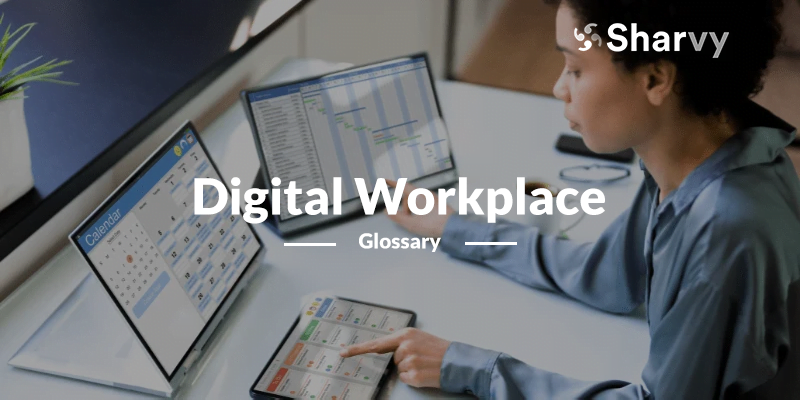What is a Digital Workplace?
A Digital Workplace is a working environment shaped entirely by technological advances, where the interaction between employees, processes, and tools takes place primarily via digital platforms.
At the heart of the Digital Workplace lies accessibility and centralization of resources. In this working environment, employees have access to all the relevant information and tools they need to carry out their tasks, wherever they are, and whatever device they use. This centralization fosters greater efficiency, enabling fluid collaboration and informed decision-making while reducing the delays and errors associated with searching for dispersed information.
In a Digital Workplace, collaboration is not just encouraged, it’s facilitated. The traditional barriers between departments and hierarchical levels are dismantled, creating virtual spaces for freely exchanging ideas. Real-time communication tools like instant messaging and video conferencing (Teams, Google Meet, etc) bridge the gap between geographically separated teams, fostering a sense of unity and commitment.
Consequently, it is as a result of the development of hybrid working and the dispersal of employees that workplaces are becoming increasingly digital.
Digital Workplace: a must for adopting the flex office?
The first thing to remember about flex office is that employees are no longer allocated a specific workstation. Once on-site, they choose their anchor point for the day and begin their tasks.
In this context, employees can fear not having a place if they don’t arrive early in the morning. As a result, the flex office can be accompanied by a number of frustrations. Nostalgia for the traditional fixed office can quickly set in. This can be explained (in part) by poorly managed flex office organizations.
To avoid these pitfalls, the creation of a Digital Workplace is inevitable. There are a number of standard but essential elements that need to be implemented to encourage the adoption of the flex office :
Email (Gmail, Outlook) & instant messaging applications (Slack).
Video conferencing tools (Zoom, Teams, Google Meet).
Data storage in the cloud (Google Workspace, Microsoft 365).
Collaborative applications (Notion) & Project management tools (Monday, Asana).
HRIS (Cegedim SRH, Lucca).
Flex office & desk booking solutions (Sharvy).
For a smooth transition to a flex office, you must offer your employees solutions for reserving a workstation and avoiding numerous pitfalls (lack of space, overbooking, discomfort, dissatisfaction, etc).
On this point, the Sharvy solution will meet your expectations! Not only does it allow your employees to anticipate their needs up to 4 weeks in advance, but it also allows them to reserve a workstation and free up an assigned workstation in anticipation of an absence. However, the application also lets you create different zones dedicated to your teams. It helps your staff to keep their bearings and make a smoother transition. Each team can work in a flex office within a defined area permanently dedicated to them. What’s more, Sharvy can be interfaced with various tools you use daily : HRIS, access control, authentication, etc. So, it’s an essential tool in your Digital Workplace!
What impact does the Digital Workplace have on the employee experience?
Introducing a Digital Workplace into a business environment has a range of significant impacts on the employee experience.
On the one hand, it facilitates fluid and efficient interaction between employees regardless of their geographical location, offering unprecedented possibilities for collaboration. Communication tools such as instant messaging, virtual workspaces, and videoconferencing platforms foster an inclusive corporate culture, enabling employees, whether working remotely or on-site, to connect easily, share ideas, and contribute meaningfully to common goals.
This increased accessibility to essential resources and information reinforces the sense of belonging to a professional community and fosters a working environment where autonomy, trust, and collaboration are valued.
As a result, it offers employees the opportunity to engage meaningfully with their tasks and collaborate seamlessly with their colleagues. The Digital Workplace helps to increase job satisfaction, boost productivity, and foster a sense of professional well-being, significantly improving the employee experience.

